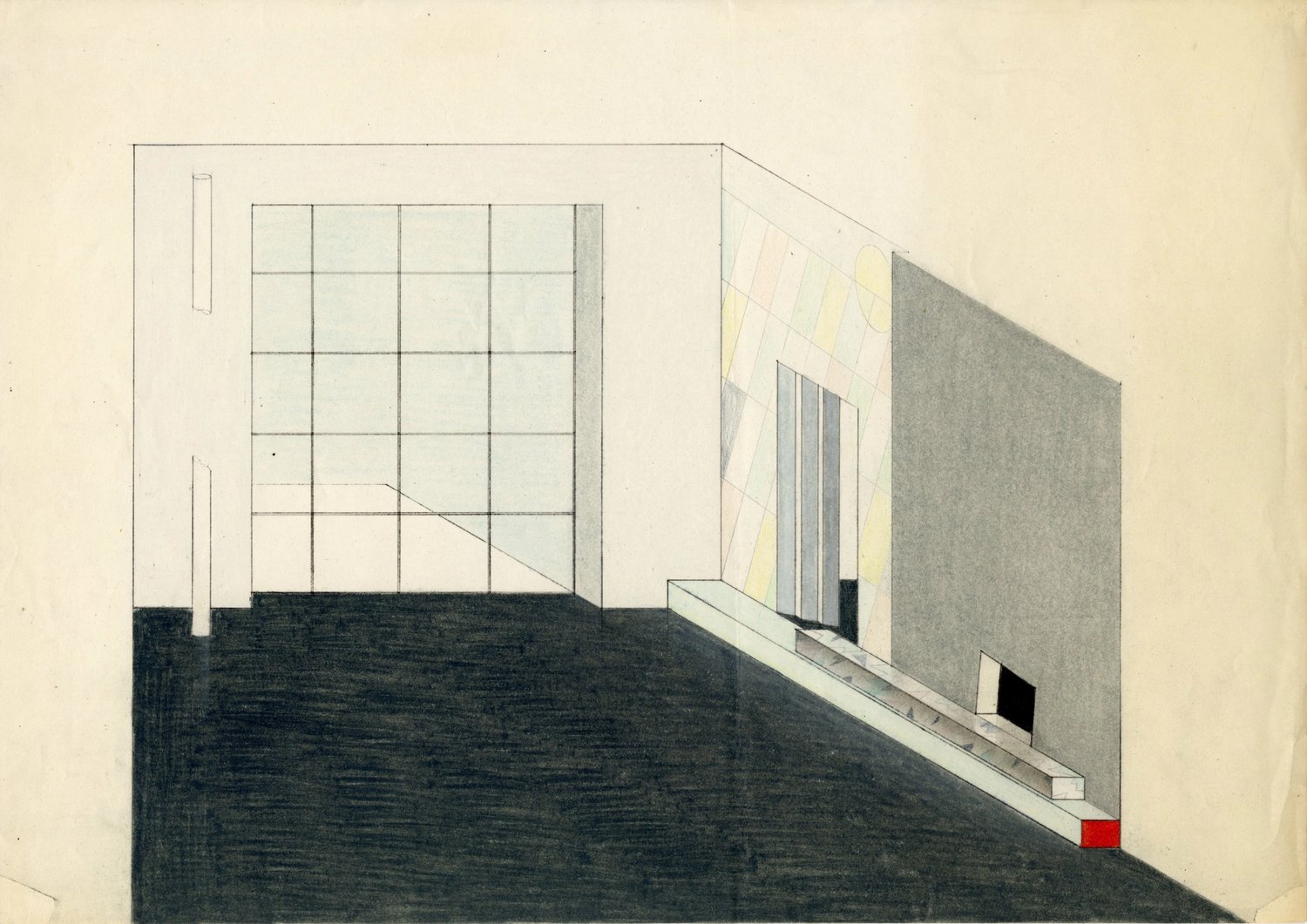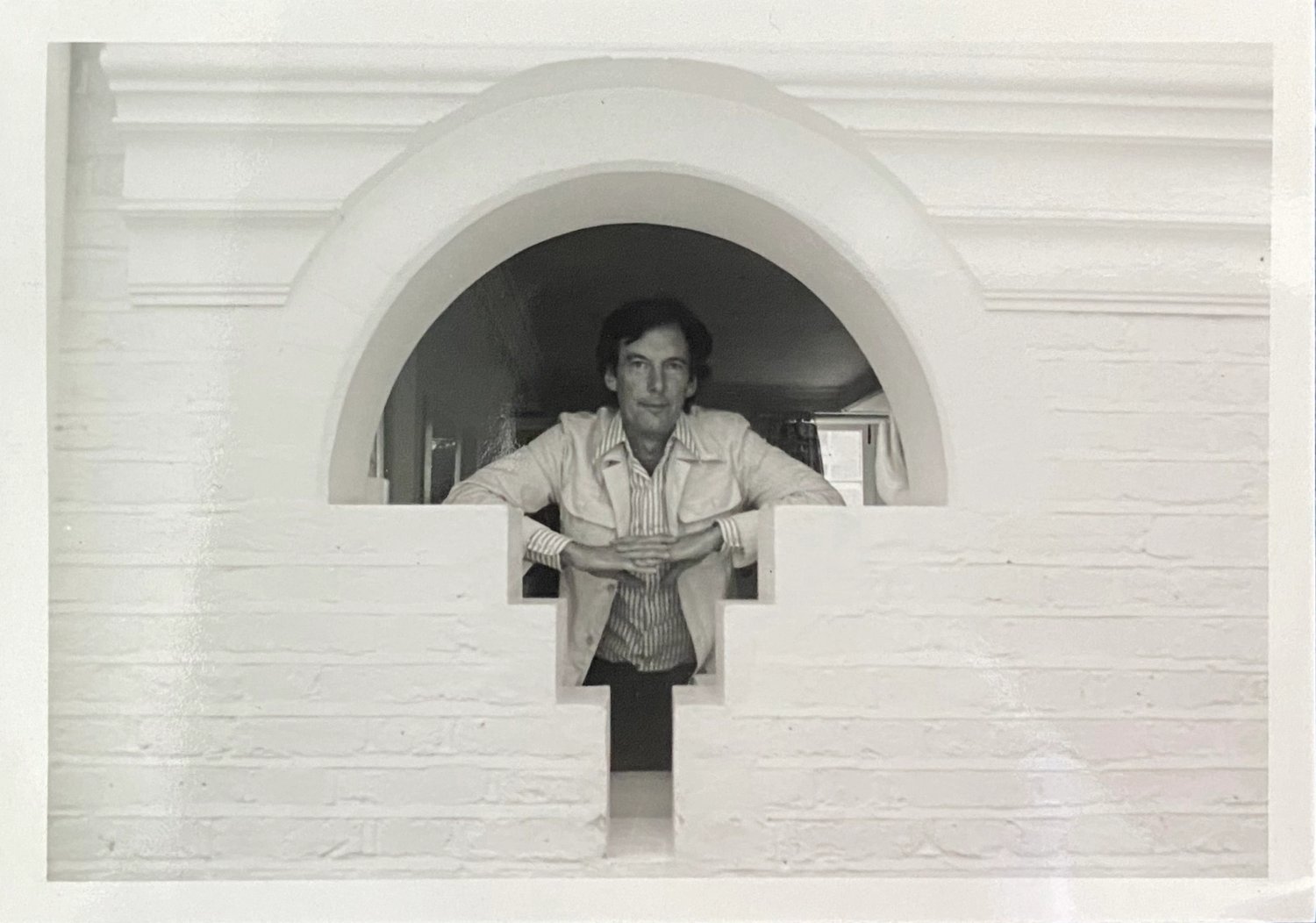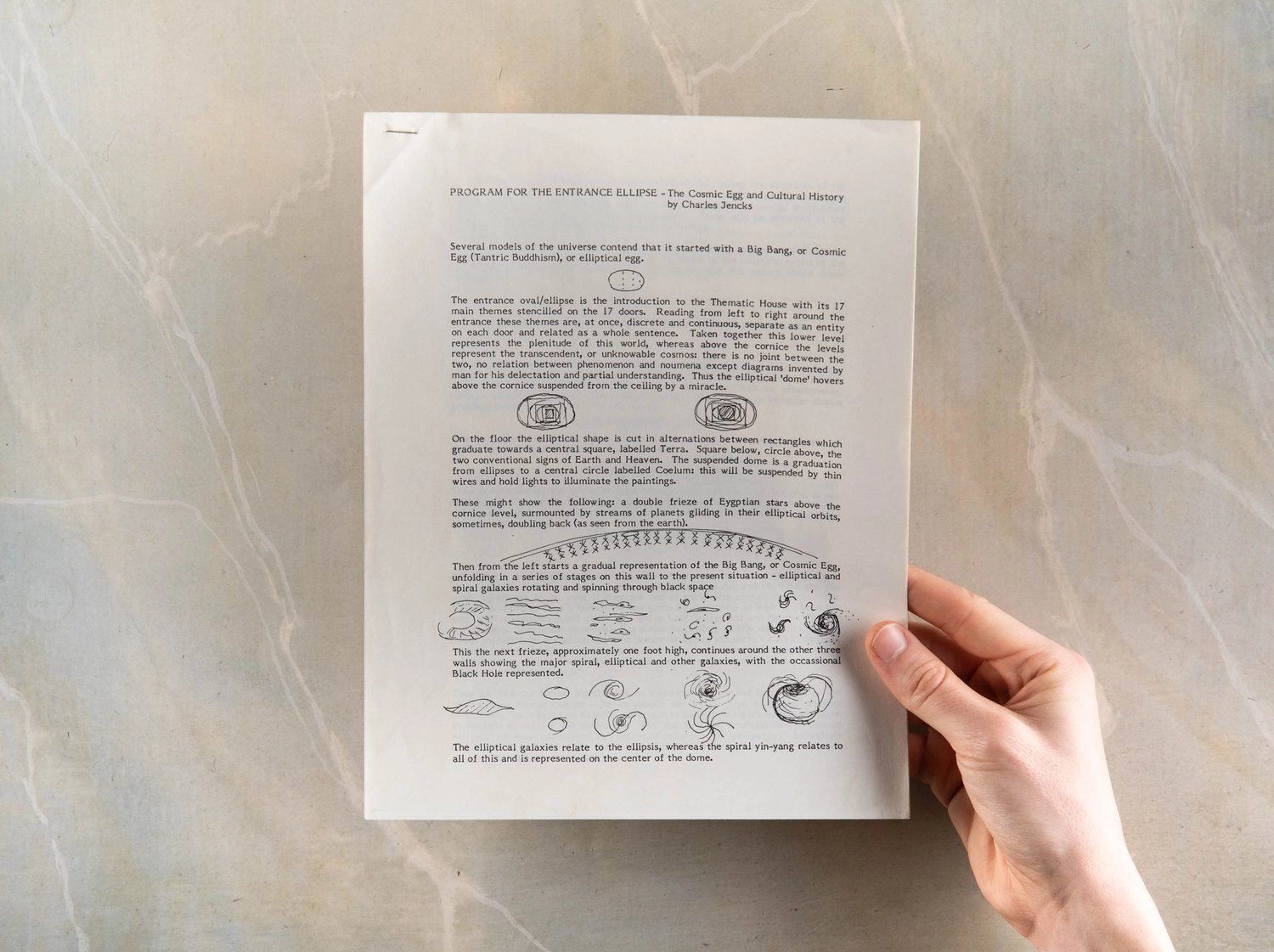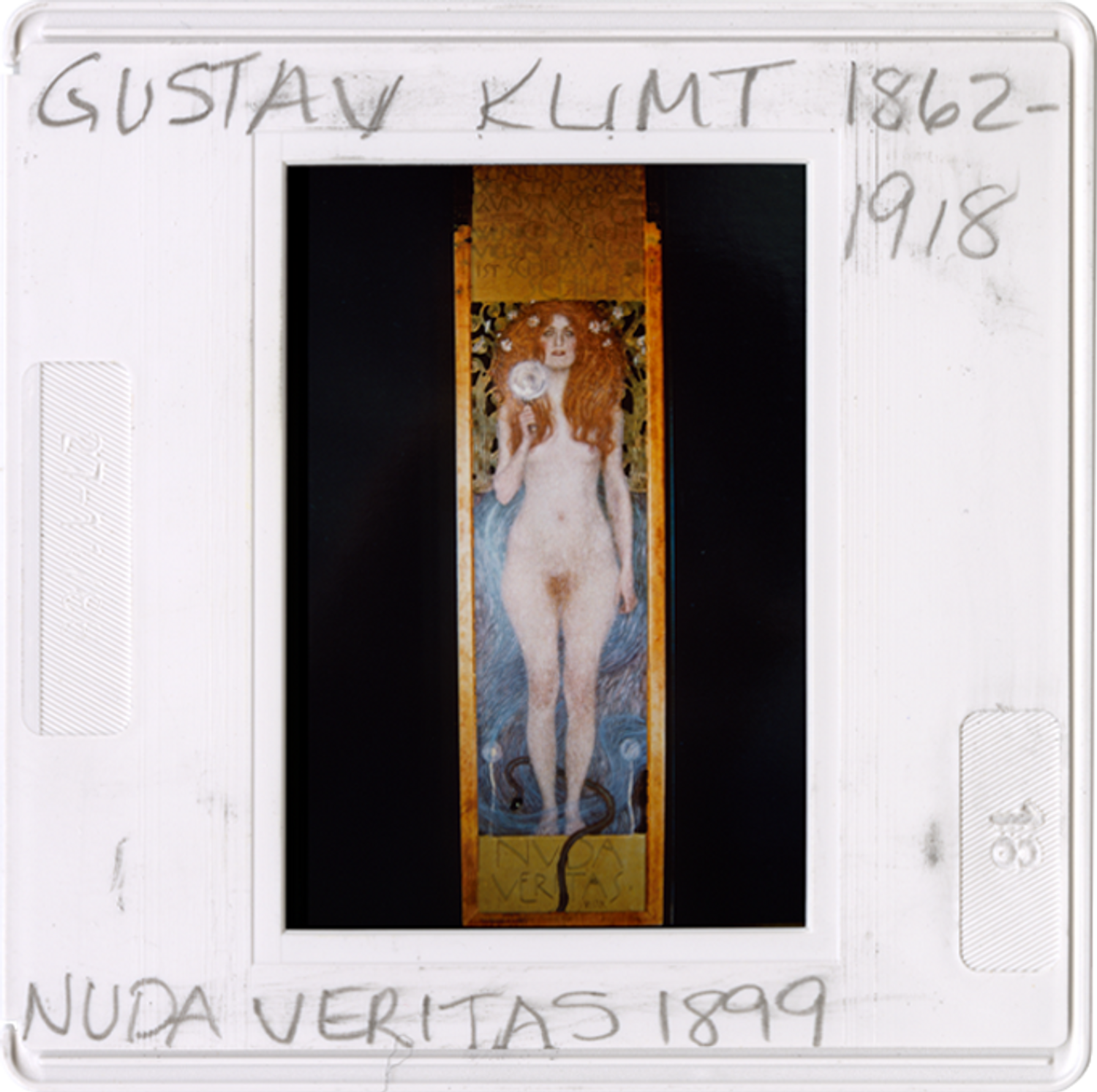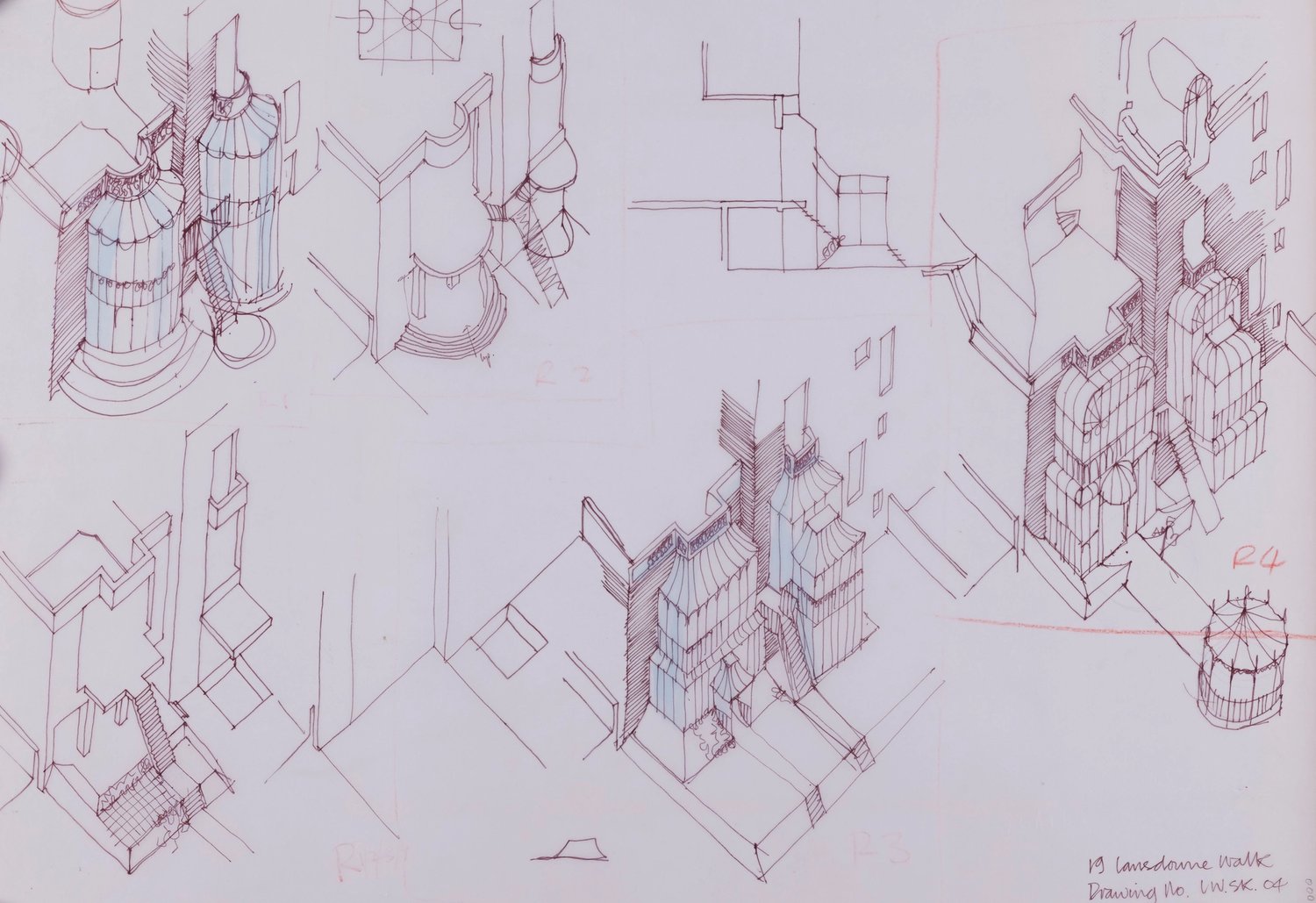Architistics, Architecture’s Linguistics
Is architecture a language? Can it be read in the same way as a text or a book? Charles Jencks proposed that it could and that its grammar might be christened Architistics. In search for meaning in architecture, or an ‘architecture that speaks’, he suggested that the fundamental elements of building – doors, windows, ceilings, columns, walls and so on – could be understood as a linguistic system. He was building on the success of semiotics in cultural criticism and the emergence of a Post-Modern canon, from Roland Barthes to Umberto Eco. The invention of Architistics was in part a reaction to the Modernist fetishisation of ‘space’ as the ultimate arbiter of architecture, which Jencks saw as a more vacuous measure. The Cosmic House is the ultimate experiment in expanding an idea of architectural iconography as narrative, for all its successes and failures, further explored through this collection of essays and images drawn from the Jencks Archive.

